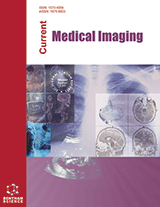
Abstract
Background: The dural venous sinuses (DVS), in general, are frequently asymmetrical and display far more anatomical variations than arterial systems. A comprehensive study of the anatomy and variants of the DVS can help surgeons in the preoperative evaluation and management as well as minimizing possible complications in the following treatment.
Methods: The current review was designed to provide a general overview of the normal anatomy and notable variants of the cerebral venous system as surveyed from the available literature. The pros and cons of different multimodal imaging methods for investigating DVS are also outlined. Finally, cases of various pathological entities are illustrated from our clinical practice.
Conclusion: There are many anatomical variations and lesions involving the DVS. MRI examination can provide essential information both on anatomical variation and morphological or functional change of the offending DVS in most circumstances. Multimodal non-invasive venography protocols may become a feasible alternative to the classical digital subtraction angiography and would improve the diagnostic accuracy in future studies.
Keywords: Dural venous sinuses, anatomy, variants, torcular herophili, magnetic resonance venography, cerebral venous sinus thrombosis.













